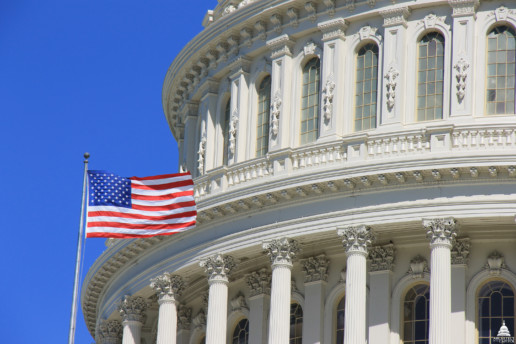What Trump’s ACA executive order means for employers
Great article from Benefits Pro by Nick Otto.
President Donald Trump wasted no time in fulfilling one promise he made time and again on his campaign trail in undoing the Affordable Care Act on day one in office.
On Friday, Trump issued an executive order directing members of his administration to take steps that will facilitate the repeal and replacement of the ACA, but experts note employers should continue with business as usual until solid formalities come out.
From an employer’s perspective, “every regulation they need to comply with, they still need to until they hear differently,” says Steve Wojcik, vice president of public policy at the National Business Group on Health.
What Trump’s order did was send a signal to everyone that his administration is prioritizing to repeal major parts of the ACA and to replace it with something else.
“In terms of specifics, nothing changes now, and it makes it clear that some changes may take longer than others because of the regulatory process to revise existing regulations,” Wojcik notes.
This specific order reiterates that it is administration policy to seek the repeal and replacement of the ACA and directs relevant agencies like Health and Human Services, Treasury and Labor, to utilize their authorities under the act “to minimize the unwarranted economic and regulatory burdens of the Act, and prepare to afford the States more flexibility and control to create a more free and open healthcare market,” according to the order.
But the different agencies will have to follow the law that requires notice and commenting periods before any final regulation is put in place, adds Chatrane Birbal, a government relations senior advisor with the Society for Human Resource Management.
“Trump’s administration is drawing a line in the sand,” she says. “While Congress is working on making its changes on a legislative front, Trump wants to move forward with the regulatory side.”
The most immediate focus will be whether the IRS acts to delay the employer reporting requirements under the employer shared responsibility provisions of the law, points out Joy Napier-Joyce, principal and leader of the employee benefits group at labor & employment law firm Jackson Lewis P.C.
“Employer reporting is key to assessing employer penalties under the employer mandate, [but it] represents a significant burden to employers and the deadlines are fast approaching,” she says. Similarly, Napier-Joyce says, “we have not seen enforcement of employer penalties under the employer mandate to date.”
Especially given Trump’s announcement Monday of a hiring freeze for federal workers and the known shortage of resources at the IRS, employers will be eager to glean hints as to any non-enforcement stances, she says. Much of the requirements under the employer mandate have been formalized through statute and regulation, so in order to effectively and completely reverse course, formal processes will need to be followed, which will in turn take time.
“For now, employers should stay the course, but stay tuned as we await how and when the agencies, particularly the IRS, choose to exercise discretion,” Napier-Joyce adds.
One issue Birbal advises keeping an eye on is that the executive order calls for greater flexibility to states.
“This could be a concern for employers because it doesn’t recognize ERISA preemption,” she notes. “It has provided employers and employees with a workable regulatory framework for benefits, offering uniform set of benefits to employees throughout out the U.S.”
“We believe the flexibility and certainty of the ERISA framework already in place has been a success to the employers sponsored system and we hope that’ll be maintained,” she adds.
Another area to note, says NBGH’s Wojcik, is how providers could be impacted by the order.
“There are a lot of punitive delivery reform regulations that are in various stages of completion or haven’t been issued,” he says. “To the extent that that affects hospitals and physicians, it could be an area where you see a lot of impact besides issues like the individual mandates and excise tax.”
As for policies that were still in the works, “if something hasn’t come out yet, it’s likely that it won’t come out ever based on executive order,” Wojcik notes.
See the original article Here.
Source:
Otto N. (2017 January 23). What trump's ACA executive order means for employers [Web blog post]. Retrieved from address https://www.benefitnews.com/news/what-trumps-aca-executive-order-means-for-employers?feed=00000152-18a4-d58e-ad5a-99fc032b0000
Employers prioritizing employee well-being
Are you putting enough priority into your employees' well-being? Take a look at this article from Employee Benefits Advisor about the importance of employee well-being by Nick Otto
Benefits managers and HR pros alike know the two-fold benefits well-being programs provide: a healthier, more engaged workforce and increased productivity. So it’s no wonder more companies are prioritizing such programs.
A large majority of employers (78%) call employee well-being a key component of company strategy, according to Virgin Pulse’s 2017 State of the Industry report. In addition, 87% say they have already invested, or plan to invest, in some type of employee well-being initiative, and 97% agree with the decidedly uncontroversial statement that worker well-being positively influences engagement.
“Until recently, employee well-being has been viewed as a ‘nice to have,’ but with more and more research directly connecting employee well-being to business productivity and performance, business leaders are recognizing it as a ‘must have’ from a business perspective,” says Chris Boyce, CEO of Virgin Pulse, a wellness technology provider. “The proof is in the data that emerging-companies that invest in employee well-being see lower turnover, less absenteeism, stronger stock performance and higher business productivity. That’s a compelling business case.”
But what programs do employers say are advancing wellness and engagement? Opinions seem to differ. Forty-one percent of the organizations surveyed by Virgin Pulse are still in the process of defining employee engagement or developing a plan to enhance it.
Further, a little less than a third (29%) of respondents have established engagement programs to fit specific needs or offer an integrated solution that links to organizational strategy, the report notes.
One of the more striking differences between the older, or more “mature” organizations, accounting for 29% of those surveyed, and the rest of the employers is that the great majority of the former group conducts annual employee engagement surveys, compared to less than half of other employers.
By completing these surveys, some roadblocks employers say they are encountering in engaging more employees in well-being programs include issues such as organization culture (48%), budgets (47%) and communications (30%), the study notes.
For benefits managers, making sure that all employees have access to benefits and programs that address their full well-being — and having the ability to communicate those programs and measure usage and impact — is critical in proving the value of wellness programs, Boyce notes.
“Today, businesses can and should be looking beyond wellness and health cost savings and evaluating employee well-being programs in the context of the larger cultural and business value they deliver, such as increased employee engagement and retention, reduced safety incidents, decreased absenteeism and higher business productivity,” he adds.
In fact, a large majority of HR leaders view workplace culture as an important part of furthering employee well-being. Eighty percent have programs in place or plan to implement programs aimed at improving culture at the office.
Beginner organizations can jump-start their well-being initiatives by offering well-being programs, experiences and activities that engage all employees, not just a few, Boyce suggests. Social connections and team support are critical in building — and sustaining — cultures of well-being, so the more actively involved employees are in the program, the more successful it will be in driving the changes and outcomes that matter for individuals and organizations.
“As organizations continue to focus on individual well-being as a positive driver of company culture, they are going to see happier, healthier, more engaged employees and better business results, across the board,” he says. “That’s just good business sense.”
The best way to implement a robust program that meets the individual needs of employees —while simplifying management and communication for employers — is to find a well-being vendor that has a hub embedded with their solution, Boyce says.
A hub that provides a one-stop-shop experience by connecting all relevant programs into a single space allows employees to access all their resources in one interface while driving participation and usage. With the right well-being and benefits hub, employers will be able to integrate a broad range of HR and benefits programs and promote them to relevant employees and populations.
“Imagine being able to suggest your financial planning program to employees that are new to the workforce, physical activity programs to those who are most sedentary, and mindfulness programs to departments in the throes of their busy season,” Boyce says. “Simplification, employee engagement and personalization are key to building a robust well-being program.”
See the original article Here.
Source:
Otto N. (2017 January 27). Employers prioritizing employee well-being [Web blog post]. Retrieved from address https://www.employeebenefitadviser.com/news/employers-prioritizing-employee-well-being?brief=00000152-1443-d1cc-a5fa-7cfba3c60000
10 tips for furthering benefits education
Are you looking for some new ways to educate yourself in the world of benefits? Here are some great tips from Benefits Pro you can use to help increase your knowledge about benefits by Erin Moriarty-Siler
In order to maintain relevant in today's ever-changing benefits market, it's important that brokers and benefits professionals keep learning.
Whether that be by networking with others in the industry, diving in with new technology efforts, or simply chatting about client needs, it's essential industry professionals keep learning.
As part of our our marketing and sales tips series, we asked our audience for their thoughts on how to continue their benefits education.
Here are the 10 tips we liked best.
1. Cost-effective education excites employees
Employees are eager to better themselves, especially if doing so can be cost effective through innovative benefits. Consider offering financial planning and educational services like career development courses or college prep classes, as these are becoming more and more popular.
2. Industry events
Disruption will continue in the insurance industry, but will you be able to keep up? Stay up-to-date by attending industry events, such as the BenefitsPRO Broker Expo in April.
3. Practice makes perfect
To retain knowledge and keep a competitive edge, it's important to practice and refresh skills year-round (think social media training, for instance).
4. It's not a "no," it's a growth opportunity
Treat rejection as a learning opportunity. Find ways to turn a no into a yes and remember that persistence prevails.
5. Trial and error is the best teacher
“Experiments are usually about learning. When you get a negative outcome, you’re still really learning something that you need to know.” Linda Hill, professor of business administration, Harvard Business School
6. Think outside your own experience
Look to your colleagues for exclusive insight you might not have. Ask a younger co-worker what they’d most like out of a benefits package, or what type of insurance is best for your officemate nearing retirement.
7. Learning and education are not created equal
“I’m a three-time college dropout, so learning over education is very near and dear to my heart, but to me, education is what people do to you, learning is what you do to yourself.” Joi Ito, director, MIT Media Lab
8. Become the expert
“You can distinguish yourself with top-notch technical or industry knowledge. It pays to be viewed as an expert, whether in risk management or the regulatory landscape. You’ll open up many opportunities by becoming an authority.” Renee Preslar, communications manager, Transamerica Employee Benefits
9. Money, money, money
“The No. 1 employee wellness trend in 2017 will be an increasing focus on helping employees better themselves financially by providing the tools, resources, education and environment to improve their finances.” Matt Cosgriff, retirement plan consultant, BerganKDV Wealth Management.
10. Too much is never enough
“You can never be overdressed or overeducated.” Oscar Wilde
See the original article Here.
Source:
Moriarty-Siler E. (2017 January 24). 10 tips for furthering benefits education[Web blog post]. Retrieved from address https://www.benefitspro.com/2017/01/24/10-tips-for-furthering-benefits-education?ref=hp-news&page_all=1
HSAs could play bigger role in retirement planning
Did you know that ACA repeal could have and effect on health savings plans (HRA)? Read this interesting article from Benefits Pro about how the repeal of the ACA might affect your HRAs by Marlene Y. Satter
With the repeal of the Affordable Care Act looming, one surprising factor in paying for health care could see its star rise higher on the horizon—the retirement planning horizon, that is. That’s the Health Savings Account—and it’s likely to become more prominent depending on what replaces the ACA.
HSAs occupy a larger role in some of the proposed replacements to the ACA put forth by Republican legislators, and with that greater exposure comes a greater likelihood that more people will rely on them more heavily to get them through other changes.
For one thing, they’ll need to boost their savings in HSAs just to pay the higher deductibles and uncovered expenses that are likely to accompany the ACA repeal.
But for another—and here’s where it gets interesting—they’ll probably become a larger part of retirement planning, since they provide a number of benefits already that could help boost retirement savings.
Contributions are already deductible from gross income, but under at least one of the proposals to replace the ACA, contributions could come with refundable tax credits—a nice perk.
Another proposal would allow HSA funds to pay for premiums on proposed new state health exchanges without a tax penalty for doing so—also beneficial. And a third would expand eligibility to have HSAs, which would be helpful.
But whether these and other possible enhancements to HSAs come to pass, there are already plenty of reasons to consider bolstering HSA savings for retirement. As workers try to navigate their way through the uncertainty that lies ahead, they’ll probably rely even more on the features these plans already offer—such as the ability to leave funds in the account (if not needed for higher medical expenses) to roll over from year to year and to grow for the future, and the fact that interest on HSA money is tax free.
But possibly the biggest benefit to an HSA for retirement is the fact that funds invested in one grow tax free as well. If you can leave the money there long enough, you can grow a sizeable nest egg against potential future health expenses or even the purchase of a long-term care policy. And, at age 65, you’re no longer penalized if you withdraw funds for nonapproved medical expenses.
And if you don’t use the money for medical expenses in retirement, but are past 65, you can use it for living expenses to supplement your 401(k). In that case, you’ll have to pay taxes on it, but there’s no penalty—it just works much like a tax-deferred situation from a regular retirement account.
See the original article Here.
Source:
Satter M. (2017 January 16). HSAs could play bigger role in retirement planning [Web blog post]. Retrieved from address https://www.benefitspro.com/2017/01/16/hsas-could-play-bigger-role-in-retirement-planning?ref=hp-news
Get Health Insurance Through Your Employer? ACA Repeal Will Affect You, Too
Great article from Health Affairs about the effects of ACA repeal on employer healthcare by JoAnn Volk
Much of the recent attention on the future of the Affordable Care Act (ACA) has focused on the fate of the 22.5 million people likely to lose insurance through a repeal of Medicaid expansion and the loss of protections and subsidies in the individual insurance market. Overlooked in the declarations of who stands to lose under plans to “repeal and replace” the ACA are those enrolled in employer-sponsored health plans — the primary source of coverage for people under 65.
Job-based plans offered to employees and their families cover 150 million people in the United States. If the ACA is repealed, they stand to lose critical consumer protections that many have come to expect of their employer plan.
It’s easy to understand the focus on the individuals who gained access to coverage thanks to the health reform law. ACA drafters targeted most of the law’s insurance reforms at the individual and small-group markets, where consumers and employers had the greatest difficulty finding affordable, adequate coverage prior to health reform. The ACA’s market reforms made coverage available to those individuals with pre-existing conditions who couldn’t obtain coverage in the pre-ACA world, and more affordable for those low- and moderate-income families who couldn’t afford coverage on their own.
Less noticed, but no less important, the ACA also brought critical new protections to people in large employer plans. Although most large employer plans were relatively comprehensive and affordable before the ACA, some plans offered only skimpy coverage or had other barriers to accessing care, leaving individuals—particularly those with costly, chronic health conditions—with big bills and uncovered medical care. For that reason, the ACA extended several meaningful protections to employees of large businesses.
Preventive Services Without Cost-Sharing
The ACA requires all new health plans, including those sponsored by employers, to cover recommended preventive services without cost-sharing, bringing new benefits to 71 million Americans. That means individuals can get the screenings, immunizations, and annual check-ups that can catch illness early or prevent it altogether without worrying about meeting a costly deductible or co-payment. With that peace of mind, it’s no wonder it’s one of the most popular provisions of the ACA. Women employees can also access affordable contraception, making available a wider variety of contraceptive choices and increasing use of long-term contraceptive methods.
Pre-Existing Condition Exclusions
Under the ACA, employers cannot impose a waiting period for coverage of a pre-existing condition. Prior to the ACA, individuals who became eligible for an employer plan—for example, once hired for a new job—might have to wait up to 12 months for the plan to cover pre-existing health conditions. You could “buy down” that waiting period with months of coverage under another plan, so long as it was the right kind of plan and you didn’t go without coverage for 63 days or more. But if you lost your job, couldn’t afford COBRA, went a few months without coverage and then were lucky enough to get another job with benefits, you might find the care you needed wasn’t covered under your plan for an entire year.
Dependent Coverage To Age 26
The ACA requires all health plans, including those sponsored by large employers, to cover dependents up to age 26. Prior to the ACA, one of the fastest growing groups of uninsured was young adults — not because they turned down coverage offered to them, but because they were less likely to have access to employer-based plans or other coverage. The result has been a dramatic increase in the number of insured young adults, particularly among those with employer-sponsored coverage. This ACA requirement is one provision President-elect Trump and many anti-ACA legislators have pledged to retain.
Annual Out-Of-Pocket Limit
The ACA requires all new health plans, including those sponsored by employers, to cap the amount individuals can be expected to pay out-of-pocket each year. Prior to the ACA, even those with the security of coverage on the job couldn’t count on protection from crippling out-of-pocket costs.
Prohibition On Annual And Lifetime Limits
The ACA prohibits employer plans from having an annual or lifetime dollar limit on benefits. Prior to the ACA, employer plans often included a cap on benefits; when employees hit the cap, the coverage cut off. For individuals who needed costly care, like a baby born prematurely or those with hemophilia or multiple sclerosis, that often meant a desperate scramble to find new coverage options as one after another benefit limit was reached.
External Review
The ACA guarantees individuals the right to an independent review of a health plan’s decision to deny benefits or payment for services, regardless of whether the employer plan is insured or self-funded. Prior to the ACA, only workers in insured plans had the right to an independent review of a denied claim. But more than 60 percent of workers are in self-funded plans, and the only option for those workers to hold their plan accountable was to sue, an expensive and lengthy process.
If you’re one of the 150 million people who get their coverage through an employer plan, you may want to pay attention to the prognostications of what’s to become of the ACA. Your access to high-quality, affordable health care will depend on the outcome.
See the original article Here.
Source:
Volk J. (20174 January 11). Get health insurance through your employer? ACA repeal will affect you, too [Web blog post]. Retrieved from address https://healthaffairs.org/blog/2017/01/11/get-health-insurance-through-your-employer-aca-repeal-will-affect-you-too/
Feds pump out even more Obamacare instructions
Have you heard about the recent changes coming to the ACA? If not take a look at this great article from HR Morning about the recent changes that will be going into effect for the ACA by Jared Bilski
If you believe Republicans on Capitol Hill, the Affordable Care Act (ACA) isn’t long for this world. Still, the Obama administration continues to clarify how businesses are supposed to comply with the law’s many provisions.
The Department of Labor (DOL), Department of Health and Human Services (HHS) and the Internal Revenue Service (IRS) just put their heads together for the 35th time to address questions surrounding Obamacare reforms.
Here’s some of the most useful info to come out of this latest FAQ:
Qualified small employer HRA
As HR Morning reported previously, the 21st Century Cures Act, among other things, allows certain small employers to offer a general purpose stand-alone health reimbursement arrangement (HRA) without violating the ACA. It is also referred to as a “qualified small employer health reimbursement arrangement” — or QSEHRA.
The FAQ touches on how this new law jibes with the ACA and clarified that in order to be a QSEHRA, the structure of the plan must:
- be funded entirely by an eligible employer — one with fewer than 50 full-time equivalent employees in the prior year and that doesn’t offer a group health plan to any of its employees
- provide payment to, or reimbursement of, an eligible employee for medical care under Code section 213(d)
- not reimburse more than $4,950 for eligible expenses for individuals or $10,000 for families, and
- be provided to all eligible employees of the employer offering the HRA.
One thing the 21st Century Cures Act (and the feds’ FAQ) doesn’t address: Whether the Employee Retirement Income Security Act (ERISA) applies to a QSEHRA.
Special Enrollment & HIPAA
The FAQ also addressed special enrollment for group health plans under the Health Insurance Portability and Accountability Act (HIPAA). Because HIPAA generally allows current employees and dependents to enroll in a company’s group health plan if the employees/dependents lose their previous coverage, they must be offered the same special enrollment option if they lose individual market coverage (i.e., health coverage they obtained through the individual Obamacare marketplace — or “exchanges”).
This could happen to individual market participants if an insurer that was covering an employee/dependent decides to stop offering that individual market coverage. As we saw last year, several major insurers have taken that step.
One exception to this special enrollment: If the loss of coverage is due to a failure to pay premiums in a timely manner — or “for cause.”
Updated women’s preventive services
As you know, under the ACA, non-grandfathered health plans are required to provide recommended preventives services for women without any cost-sharing.
Those services are listed in the Health Resources and Services Administration’s (HRSA) guidelines, and the guidelines were just updated on December 20, 2016. The updated guidelines bolster many of the existing covered preventive care services for women in the areas of:
- breast cancer
- cervical cancer
- gestational diabetes
- HIV, and
- domestic violence.
The services in the updated guidelines must be covered — without cost-sharing — for plan years beginning on or after December 20, 2017 (Jan. 1, 2018 for calendar year plans). Until then, plans can keep using the previous HRSA guidelines.
See the original article Here.
Source:
Bilski J. (2017 January 6). Feds pump out even more Obamacare instructions [Web blog post]. Retrieved from address https://www.hrmorning.com/feds-pump-out-even-more-obamacare-instructions/
DOL and IRS want a closer look at your retirement plan
Are you worried that your company's retirement plan is not up to government standards? If so take a look at this article from HR Morning about what the DOL and IRS are looking for in retirement plans by Jared Bilski
Two of the most-feared government agencies for employers — the DOL and IRS — have decided there’s a real problem with the way retirement plans are being run, and they’re ramping up their audits to find out why that is.
In response to the many mistakes the agencies are seeing from retirement plan sponsors, the IRS and DOL will be increasing the frequency of their audits.
What does that mean for you? According to experts, plan sponsors can expect the feds to dig deep into the minute operations of plans. That means the unfortunate employers who find themselves in the midst of an audit can expect to be asked for heaps of plan info.
Linda Canafax, a senior retirement consultant with Willis Towers Watson, put it like this:
“The DOL and IRS are truly diving deep into the operations of the plans. We have seen a deeper dive into the operations of plans, particularly with data. Plans may be asked for a full census file on the transactions for each participant. Expect the DOL and IRS to do a lot of data mining.”
What to watch for
Ultimately, it’s impossible to completely prevent an audit. But employers can — and should — do certain things to safeguard themselves in the event the feds come knocking.
First, a self-audit is always a good idea. It’s always better for you to discover any problems before the feds do. Next, you’ll want to be on the lookout for the types of errors that can lead the feds to your workplace in the first place.
The most common errors the IRS and the DOL are looking for:
- Untimely remittance of employee deferrals (i.e., contributions)
- Incorrect compensation definition (plan documents dictate which types of comp employees are eligible to contribute from)
- Not following the plan’s own directives, and
- Not having a good long-term system (20-30 years out) for tracking and paying benefits to vested participants.
See the original article Here.
Source:
Bilski J. (2017 January 6). DOL and IRS want a closer look at your retirement plan[Web blog post]. Retrieved from address https://www.hrmorning.com/dol-and-irs-want-to-take-a-closer-look-at-your-retirement-plan/
What medical conditions are driving employer healthcare costs?
Do you know which medical conditions are driving your healthcare cost? Check out this great article from Employee Benefits Advisor about the cost associated with your employer healthcare by Phil Albinus
Healthcare costs surrounding diabetes reached $101 billion in diagnoses and treatments over the past 18 years — and the cost grew 36 times faster than the cost of ischemic heart disease, the leading cause of death in the U.S. Further, out of 155 medical conditions, only 20 accounted for half of all medical spending, according to a JAMA analysis of 2013 healthcare costs.
The third-most expensive medical condition, low back and neck pain, primarily strikes adults of working age while diabetes and heart disease is primarily found in people 65 and older.
The JAMA study found total health spending for these conditions totaled $437 billion in 2013. Diabetes, heart disease, low back and neck pain, along with hypertension and injuries from falls, comprise 18% of all personal health spending. All in all, 20 conditions make up more than half of all spending on healthcare in the U.S.
These stark figures shed light on the rising healthcare costs that employers pay when addressing their workforce’s ailments.
According to Francois Millard, senior vice president and chief actuarial officer for Vitality Group, one of the study’s sponsors, this is the first study to dig into the details of the leading ailments of the U.S. and its costs to employers and families as they deal with the conditions.
“In absolute terms, most money for care is in the working age population,” he says. “It impacts households and employers and contributes to the financial burden of families.”
“What we see is the financial burden increases as the disease increases, and while the paper doesn’t go into detail, we already have a significant knowledge of diabetes and heart condition. It is related to modifiable behavior.”
The JAMA study noted the differences between public health program spending from personal health spending, including individual out-of-pocket costs and spending by private and government insurance programs.
“While it is well known that the U.S. spends more than any other nation on healthcare, very little is known about what diseases drive that spending,” said Dr. Joseph Dieleman, lead author of the paper and assistant professor at the Institute for Health Metrics and Evaluation at the University of Washington, in a press statement. “IHME is trying to fill the information gap so that decision-makers in the public and private sectors can understand the spending landscape, and plan and allocate health resources more effectively.”
Despite using figures from 2013, the information can help employers as they identify where their healthcare dollars are going.
“Given the biggest increases in healthcare spending on impact working age populations, it requires employers to improve their work environments and facilitate good health. And [this study can] help increase the transparency of health within their populations,” says Millard.
“Employers need to think what they do that impacts beyond the four walls of the employers and create a symbiotic relationship with health within their societies,” he adds.
The study can also boost transparency into the healthcare data. “This study is also an accountability and outcome of the money they are spending on health treatment,” Millard says. “Is it sufficient to still pay for services or can we push for more accountability for health outcomes? The other thing this facilities is that employers get the adequate level of data. They can ask the right questions and determine accountability for the huge amounts of healthcare.”
He adds, “With all the uncertainty around 2017, perhaps this transparency will give employers a voice to all of the money that they are spending.”
The top 10 most costly health expenses in 2013:
1. Diabetes – $101.4 billion
2. Ischemic heart disease – $88.1 billion
3. Low back and neck pain – $87.6 billion
4. Hypertension – $83.9 billion
5. Injuries from falls – $76.3 billion
6. Depressive disorders – $71.1 billion
7. Oral-related problems – $66.4 billion
8. Vision and hearing problems – $59 billion
9. Skin-related problems, such as cellulitis and acne – $55.7 billion
10. Pregnancy and postpartum care – $55.6 billion
See the original article here.
Source:
Albinus P. (2017 January 12). What medical conditions are driving employer healthcare costs?[Web blog post]. Retrieved from address https://www.employeebenefitadviser.com/news/what-medical-conditions-are-driving-employer-healthcare-costs?brief=00000152-1443-d1cc-a5fa-7cfba3c60000
How to encourage increased investment in financial wellbeing
Is financial wellness an important part of your company culture? By promoting financial wellness among your employees', employers can reap the benefits as well. Check out this great article from Employee Benefits Advisor about the some of the effects that promoting financial wellness can have. By Cort Olsen
Financial wellness has come to the forefront of employers’ wellbeing priorities. Looking back on previous years of participation in retirement savings programs such as 401(k)s, employers are not satisfied with participation, an Aon study shows.
As few as 15% of employers say they are satisfied with their workers’ current savings rate, according to a new report from Aon Hewitt. In response, employers are focused on increasing savings rates and will look to their advisers to help expand financial wellbeing programs.
Aon surveyed more than 250 U.S. employers representing nearly 9 million workers to determine their priorities and likely changes when it comes to retirement benefits. According to the report, employers plan to emphasize retirement readiness, focusing on financial wellbeing and refining automation as they aim to raise 401(k) savings rates for 2017.
Emphasizing retirement readiness
Nearly all employers, 90%, are concerned with their employees’ level of understanding about how much they need to save to achieve an adequate retirement savings. Those employers who said they were not satisfied with investment levels in past years, 87%, say they plan to take action this year to help workers reach their retirement goals.
“Employers are making retirement readiness one of the important parts of their financial wellbeing strategy by offering tools and modelers to help workers understand, realistically, how much they’re likely to need in order to retire,” says Rob Austin, director of retirement research at Aon Hewitt. “Some of these tools take it a step further and provide education on what specific actions workers can take to help close the savings gap and can help workers understand that even small changes, such as increasing 401(k) contributions by just two percentage points, can impact their long-term savings outlook.”
Focusing on financial wellbeing
While financial wellness has been a growing trend among employers recently, 60% of employers say its importance has increased over the past two years. This year, 92% of employers are likely to focus on the financial wellbeing of workers in a way that extends beyond retirement such as help with managing student loan debt, day-to-day budgeting and even physical and emotional wellbeing.
Currently, 58% of employers have a tool available that covers at least one aspect of financial wellness, but by the end of 2017, that percentage is expected to reach 84%, according to the Aon Hewitt report.
“Financial wellbeing programs have moved from being something that few leading-edge companies were offering to a more mainstream strategy,” Austin says. “Employers realize that offering programs that address the overall wellbeing of their workers can solve for myriad challenges that impact people’s work lives and productivity, including their physical and emotional health, financial stressors and long-term retirement savings.”
The lessons learned from automatic enrollment are being utilized to increase savings rates. In a separate Aon Hewitt report, more than half of all employees under plans with automatic enrollment default had at or above the company match threshold. Employers are also adding contribution escalation features and enrolling workers who may not have been previously enrolled in the 401(k) plan.
“Employers realize that automatic 401(k) features can be very effective when it comes to increasing participation in the plan,” Austin says. “Now they are taking an automation 2.0 approach to make it easier for workers to save more and invest better.”
See the original article Here.
Source:
Olsen C. (2017 January 16). How to encourage increased investment in financial wellbeing [Web blog post]. Retrieved from address https://www.employeebenefitadviser.com/news/how-to-encourage-increased-investment-in-financial-wellbeing?feed=00000152-1377-d1cc-a5fa-7fff0c920000
FIVE TRENDS IN TALENT
Do you know what is needed to attract new talent to your company? Here's a great article from SHRM about 5 trends that new hires are looking for in 2017 by Shonna Waters & Alex Alonso
See the original article Here.
Source:
Waters S., Alonso A. (2017 January 5). Five trends in talent [Web blog post]. Retrieved from address https://blog.shrm.org/blog/five-trends-in-talent








